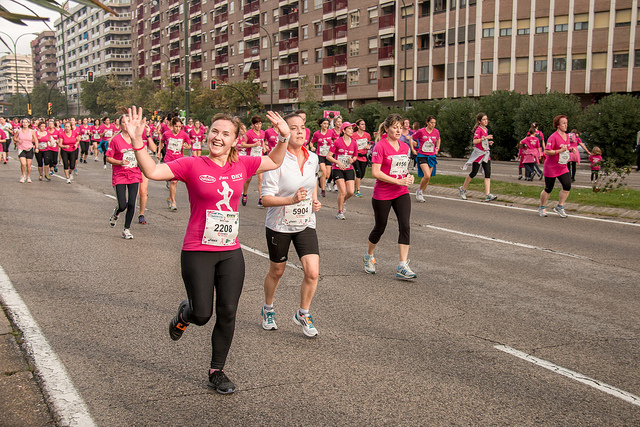increasing women’s participation in sport through new VicHealth initiative
The Victorian Health Promotion Foundation (VicHealth) has launched its $1.8 million initiative aimed at increasing the number of women and girls participating in sport. Monday’s launch of Changing the Game: Increasing Female Participation in Sport included the support of ambassadors such as Chelsea Roffey, the first female AFL Grand Final umpire, and Bridie O’Donnell, National and Oceania cycling champion, as well as the current Victorian Minister for Health, The Hon. Jill Hennessy.
The Changing the Game program will work with six sporting codes in Victoria to get 25,000 women and girls involved in physical activity, whether it be competitively or in a more informal environment, over the next two years. The program will also aim to raise the profile of women’s sport more generally. The sporting codes involved in the initiatives are AFL Victoria in partnership with the AFL, Netball Victoria, Surfing Victoria, Gymnastics Victoria, Cycling Victoria and Tennis Victoria in conjunction with Tennis Australia.
Simultaneously with the launch of the program, VicHealth has released statistics from its latest survey on female participation in sport. The survey found that women of all ages have lower participation rates in physical activity than men. Four times as many women choose to participate in more flexible physical activity rather than through sporting or recreational clubs and competitions.
VicHealth CEO Jerril Rechter emphasised that the program aimed to go beyond encouraging women’s participation in physical activity to answering the need to ‘change the conversation about women’s sport.’ VicHealth’s survey found that three in five Victorians (62%) believe that women’s sport does not get enough coverage in the media.
In recent months, it would appear that women’s sport has been gaining some traction in the media. The women’s AFL exhibition match on Sunday 16 August between Western Bulldogs and Melbourne will be televised live as a curtain raiser to the men’s game. The Australian women’s cricket team are gaining media attention for beating England in the Ashes, as opposed to the poor display by their male counterparts, and the Netball World Cup is currently being hosted in Sydney. Nonetheless, women’s sport in Australia still consistently lags behind men’s sport, whether it comes to media coverage, pay rates or holding leadership positions in organisations.
With the survey finding that more than two thirds of adult Australian women are considered either sedentary (38%) or undertaking low levels (35%) of exercise, clearly there is importance in encouraging women to participate in physical activity. In a media release, Ms Rechter highlighted that ‘regular physical activity is one of the most important factors in promoting good health and mental wellbeing and preventing chronic disease,’ and that these initiatives could extend health benefits to women and girls who did not usually participate in sport for a variety of reasons.
The program’s design has emphasised that women tend to place more importance on social aspects of physical activity, rather than performance outcomes such as building strength, although their motives may still evolve over time. As a result, the initiatives supported by Changing the Game include activities such as women’s only pop-up spin classes from Cycling Victoria to create a communal experience, and entry-level programs from Gymnastics Victoria designed to improve strength and flexibility.
These programs have been designed to focus on the social elements and flexible nature of physical activity, with the survey citing that women may need more flexibility in terms of location and price structures when exercising. The initiatives also provide spaces for women to exercise together in order to encourage participation and reduce peer pressure, particularly for adolescents.
Finally, the VicHealth survey found that young women between 18-35 were often motivated to exercise by potential weight loss and peer pressure, whilst older women were more likely to be motivated by potential positive health outcomes. However, there were a number of barriers to participation. For adolescent girls, this included lack of family financial support or encouragement, whilst women aged 18-55 felt intimidated by the serious gym environment. Across all ages, it was reported that women and girls were held back by time constraints and confidence levels.


